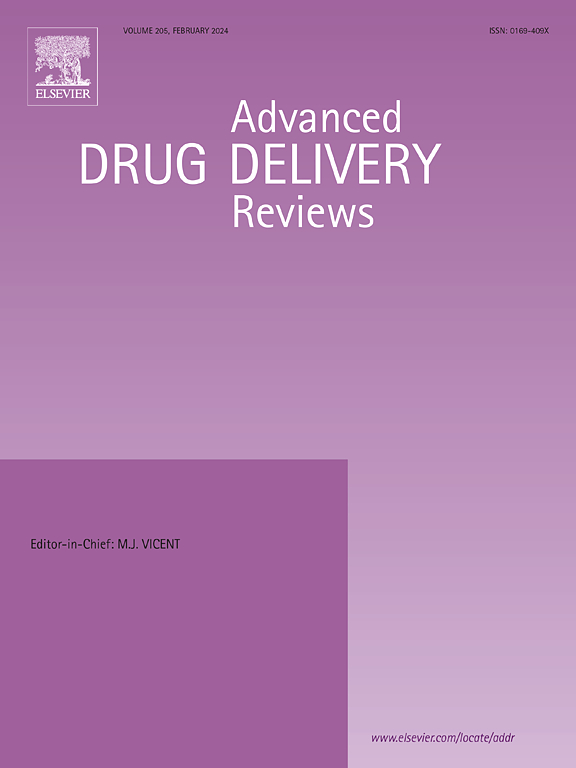Carbon dots as multi-modal contrast agents: opportunities and open challenges for in vivo bioimaging
IF 17.6
1区 医学
Q1 PHARMACOLOGY & PHARMACY
引用次数: 0
Abstract
Carbon dots (CDs), a class of carbonaceous and fluorescent nanomaterials with ultra-small dimensions (below 10 nm), have become popular nanoparticles in several fields, such as nanomedicine, catalysis, sensing or electronics. Due to their chemical versatility, luminescence, surface functional groups, biocompatibility and water solubility, they have been extensively studied in biomedical field. In this review, we focused on CDs used as nano contrast agents (nCAs) for fluorescence, magnetic resonance or computed tomography imaging in small animal models. We described the advantages of using CDs, highlighting some relevant examples, as well as the current issues that slow down their effective use in biomedicine, such as the rational synthetic design, scant purification and poor characterization. Lastly, we gathered some perspectives to develop carbon dots with more reliable properties and accomplish cutting-edge applications.


碳点作为多模态造影剂:体内生物成像的机遇和挑战
碳点(CDs)是一类具有超小尺寸(小于10 nm)的碳质荧光纳米材料,已成为纳米医学、催化、传感或电子等多个领域的热门纳米颗粒。由于其化学通用性、发光性、表面官能团、生物相容性和水溶性等特点,在生物医学领域得到了广泛的研究。在这篇综述中,我们重点介绍了CDs作为纳米造影剂(nCAs)在小动物模型中的荧光、磁共振或计算机断层扫描成像。我们描述了使用cd的优点,重点介绍了一些相关的例子,以及目前阻碍其在生物医学上有效应用的问题,如合成设计不合理、纯化不足和表征不佳。最后,我们收集了一些开发性能更可靠的碳点和实现前沿应用的观点。
本文章由计算机程序翻译,如有差异,请以英文原文为准。
求助全文
约1分钟内获得全文
求助全文
来源期刊
CiteScore
28.10
自引率
5.00%
发文量
294
审稿时长
15.1 weeks
期刊介绍:
The aim of the Journal is to provide a forum for the critical analysis of advanced drug and gene delivery systems and their applications in human and veterinary medicine. The Journal has a broad scope, covering the key issues for effective drug and gene delivery, from administration to site-specific delivery.
In general, the Journal publishes review articles in a Theme Issue format. Each Theme Issue provides a comprehensive and critical examination of current and emerging research on the design and development of advanced drug and gene delivery systems and their application to experimental and clinical therapeutics. The goal is to illustrate the pivotal role of a multidisciplinary approach to modern drug delivery, encompassing the application of sound biological and physicochemical principles to the engineering of drug delivery systems to meet the therapeutic need at hand. Importantly the Editorial Team of ADDR asks that the authors effectively window the extensive volume of literature, pick the important contributions and explain their importance, produce a forward looking identification of the challenges facing the field and produce a Conclusions section with expert recommendations to address the issues.

 求助内容:
求助内容: 应助结果提醒方式:
应助结果提醒方式:


